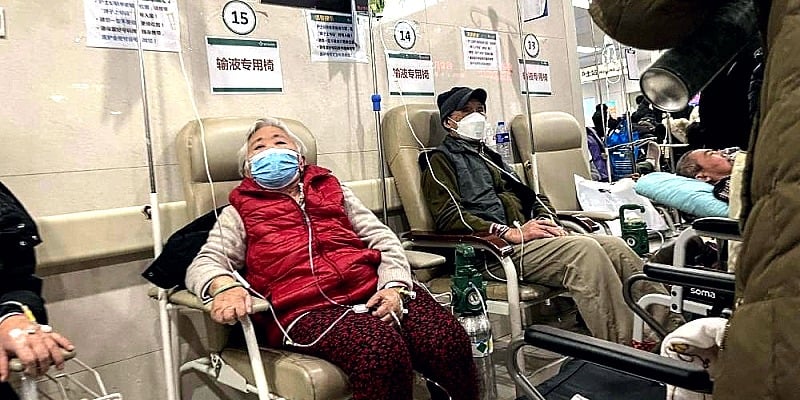GENEVA: The World Health Organization criticized China’s “very narrow” definition of Covid deaths on Wednesday, warning that official statistics were not showing the true impact of the outbreak.
There is growing concern over China’s steep rise in Covid infections since Beijing last month abruptly lifted years of hardline restrictions, with hospitals and crematoriums quickly overwhelmed.
“We still do not have complete data,” WHO emergencies director Michael Ryan told reporters.
“We believe that the current numbers being published from China under-represent the true impact of the disease in terms of hospital admissions, in terms of ICU admissions, and particularly in terms of deaths.”
China has only recorded 22 Covid deaths since December and has dramatically narrowed the criteria for classifying such fatalities — meaning that Beijing’s own statistics about the unprecedented wave are now widely seen as not reflecting reality.
Ryan pointed out that the definition Beijing is using “requires a respiratory failure” associated with a Covid infection for a fatality to be registered as a Covid death.
“That is a very narrow definition,” he said.

Testing travelers ‘understandable’
EU countries have also echoed the WHO’s concern that Chinese data on Covid infections was insufficient.
As countries grapple with the best response to the surge in cases, a crisis meeting of European Union experts said Wednesday that EU countries were “strongly encouraged” to demand Covid tests from passengers coming from China.
The meeting was held to coordinate a joint EU response to the sudden inflow of visitors as Beijing lifts its “zero-Covid” policy which had largely closed the country off to international travel.
The experts also recommended that passengers to and from China wear face masks, that EU countries conduct random tests on arrivals and test wastewater from flights from China, according to a statement issued by the Swedish presidency of the EU.
WHO chief Tedros Adhanom Ghebreyesus had earlier told reporters that the organization’s officials had held high-level talks in recent weeks with counterparts in China.
“We continue to ask China for more rapid, regular, reliable data on hospitalization and deaths, as well as more comprehensive, real-time viral sequencing,” Tedros said.
He reiterated that the UN health agency understood why some countries were introducing fresh Covid curbs on visitors from China.
“With circulation in China so high and comprehensive data not forthcoming… it is understandable that some countries are taking steps they believe will protect their own citizens,” he said.
The United States — which will require negative tests from most travelers from China starting Thursday — praised the role of the WHO and said Washington’s own precautions were due to the lack of transparency from Beijing.
The UN body is “in the best position to make an assessment” due to its contact with Chinese officials, State Department spokesman Ned Price said.
‘Most transmissible’ subvariant
Outside of China, many experts have their attention on the US and Omicron subvariant XBB.1.5, which has been detected in 29 countries so far.
Maria Van Kerkhove, the WHO’s Covid-19 technical lead, said it was “the most transmissible subvariant that has been detected yet.”
However there is no indication as yet that XBB.1.5 — which has been spreading rapidly in the northeastern United States — causes more severe disease than other types of Covid.
The upsurge in XBB.1.5 cases, Van Kerkhove said, underlined how important it was “to continue surveillance for Covid-19 around the world.”
“There were more than 13 million Covid cases reported to the WHO last month alone, she said, “and we know that that’s an underestimate because surveillance has declined.”
There were also 15 percent more Covid deaths globally last month than the month before, she said.
“Every week, approximately 10,000 people die of Covid-19, that we are aware of,” Tedros said. “The true toll is likely much higher.”
ADVERTISEMENT
ADVERTISEMENT








































